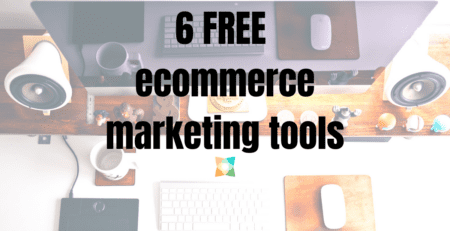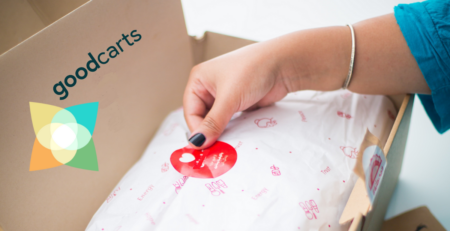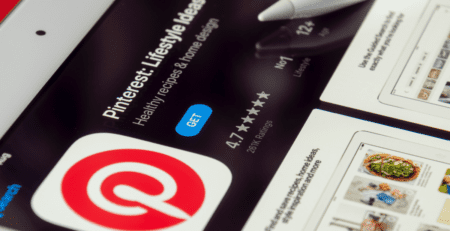At GoodCarts we have so many brands and products, so what sets brands apart isn’t so much about what your product is, but what your product does: how it helps in a broader context, how it makes someone feel.
Plastic straws have been an object of fascination for the conversation around sustainability. They are an easy way to understand our individual consumption and massive everyday plastic use. Straws are symbolic for the greater conversation around plastics, oil, and consumerism.
Those larger concepts, in addition to the broadness of sustainability, are difficult to talk about to most people in a succinct way or in a way that makes the issues at hand real.
One company in the GoodCarts network is tackling the larger issues of sustainability and single use plastics through straws and utensils. The Sustainable Switch provides a product that is an answer to a problem.
Their product itself is a story, a small and defiant act of change. Zero waste utensils eliminate waste and are better for the environment. Their product is successful for two reasons, their product is a means to an end, and tells a story.
As a network of impact retailers, we know you have a story to tell about why you do what it is that you do. But are you telling it in the most effective way possible? Is your story resonating?
Let’s dive into the most effective way to market your products and your story: storytelling. You’ll need a compelling brand story and platforms to share your brand to get started!
How to start building a brand story
A brand story is who you are and what you believe in. It is the outset of every interaction customers have with your brand.
Questions to consider in developing your brand story:
- Who are you as a brand? What is your purpose? Your truth?
- What does your brand or product contrast with? What is your relevance in the world?
- Why do you do what you do?
- How did you arrive at this product, this market, this concept?
- Where are you trying to get to with your business?
These are your guiding principles. Answer these questions authentically. Consumers want a brand that’s real and accessible, stories that involve a tension, an insight into the behind the scenes. They want to take part in where your business is going.
The dimensions to your story develop a deeper connection to consumers. Cassandra Rosen, branding expert and cofounder at FK Interactive, says, “if they’ve never purchased from you before, branding and narrative is what will prompt them to take a chance on your brand.”
Once you’ve cultivated a captivating brand, you’ll start to tell that story.
Storytelling 101
Before a customer buys your product, your product and your business are just an idea to them. Supplementing the features of your product with your brand’s story will build an emotional connection between you, your service, and a potential customer.
The Sustainable Switch produces zero-waste products to eliminate single use materials that are detrimental to Earth. Their products are a commentary on lifestyle and provide actionable means to fix a problem.
They know that a reusable straw or utensil is one element to a larger sustainability issue. But by starting with changing one plastic habit and replacing it with a sustainable one, you’re feeling and manifesting change within yourself and the system. They use their platforms to demonstrate sustainable lifestyle practices in everyday life. The attempt is to see sustainability as an individual practice.
Sustainability is broad and can be overwhelming for consumers. What this company seeks to do is make it tangible, and show the customer more ways to bring about sustainable changes to your kitchen, to your coffee habit, to your overall lifestyle.
Storytelling is a multi-faceted way to talk about your brand and create an emotional connection. It’s a cost effective marketing strategy, too. Small retailers don’t have a substantial marketing budget, they don’t have to as long as they can tell a good story.
A captivating brand story attracts new customers on its own. Storytelling will enhance your business’ visibility, generate customer interest, broaden your impact and lead to new sales and a brand community.
You’ll tell this story through your brand assets, your social media, your website, your descriptions of your product. These all fall under the umbrella of storytelling and are mediums to represent your brand.
Implementing your story
You have your narrative, now you need to tell it. Words and images are both part of brand storytelling. People remember stories, but an image is worth a thousand words.
Your marketing strategy
Instagram is one of the best platforms for brand promotion and brand community. The secret to success is not just great images, but how the visual is woven into the narrative. The visual medium dictates the scope of the narrative being told.
Videos of your product creates the effect of story-living because it demonstrates how a product is used. Sharing photos from your customers of your product placed in their home, brings your product and story to life.
Let your customers be your marketing campaign. Sharing their images of your product or sharing a client’s story with your product is social proof of your product’s functionality and the implementation of your narrative. A potential customer can visually see how your product can fit into their life or home by virtue of seeing it in action.
The Sustainable Switch’s Instagram content is a demonstration of usability and relatability. They feature pictures of their straws in morning smoothies, their reusable utensils in a work lunch, their toothbrushes in bathrooms.
Another way to tell your story is graphics. They visually communicate your words but in your customer’s language. A graphic let’s customer’s read it in their voice. Seeing the parallels of your voice with their voice allows them to see the relatability of your brand and product.
Check out this graphic on the Sustainable Switch’s Instagram page!
They break down all of the positive environmental impacts of shopping at a secondhand store. If you scroll through their page, you’ll see a number of graphics that weave in the larger elements of why they are in business: to embolden people to live more sustainable lives.
A key element to a good story is that it can be someone else’s story. A key element to social media marketing is shareability. Creating a story that someone can recognize themselves in, and want to share with their community will translate into sales, brand loyalty and continuity.
Putting it all together
When building a brand story, it doesn’t have to be original, or unique, it just has to be true. The secret to a successful brand is authenticity, and knowing how to tell the story. Sometimes the best person to tell your story is your customer, sometimes it’s your employees, sometimes it’s you.
The world is becoming more and more digital, so play with the formats for telling your story. But always go back to your North Star, the heart of who you are. All the features we write about are nothing without a sound North Star to guide you.
Join the GoodCarts network today and build your story around your values and your customer’s principles. See how GoodCarts can be a part of your success story.











